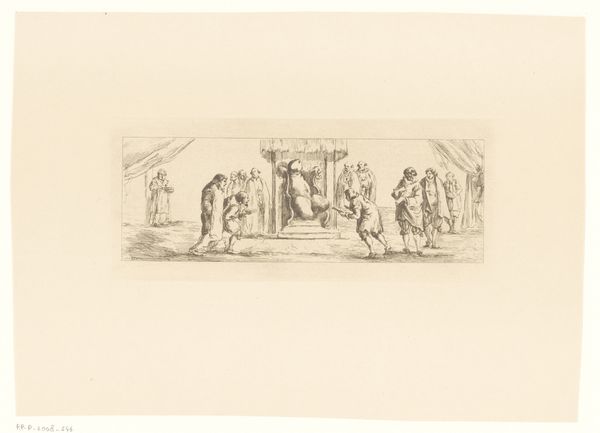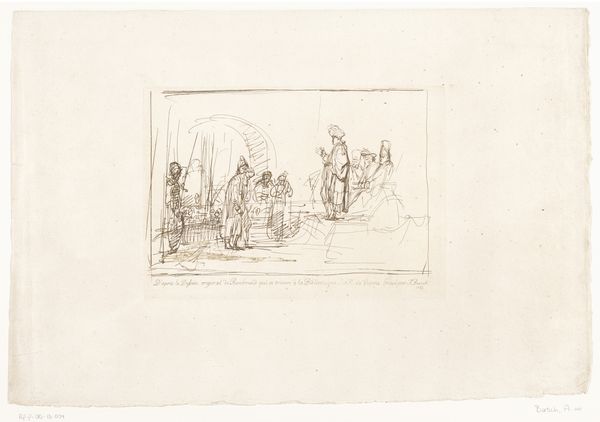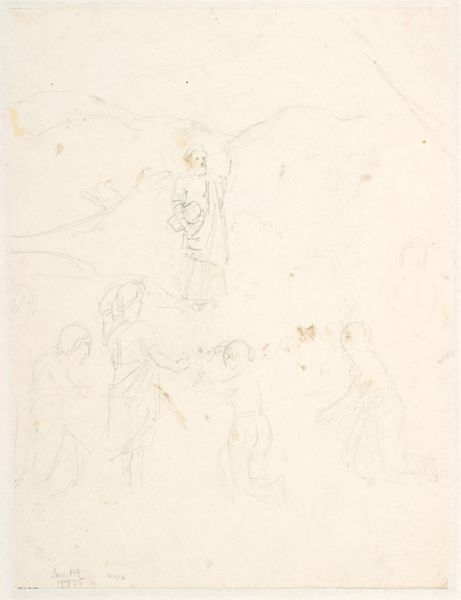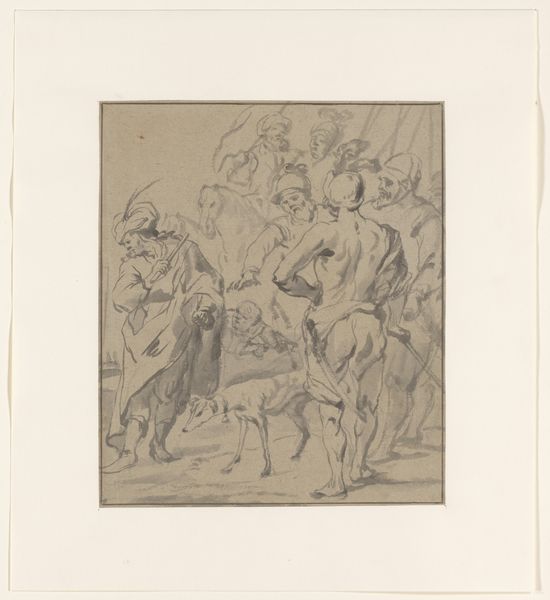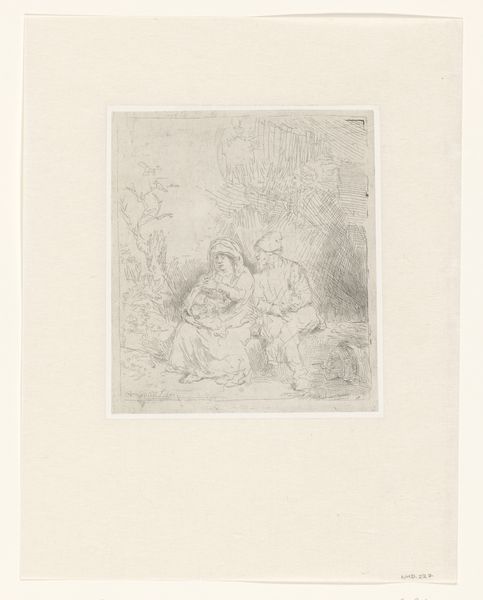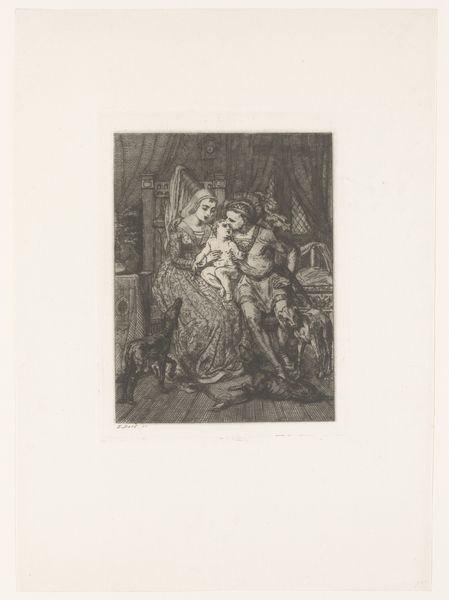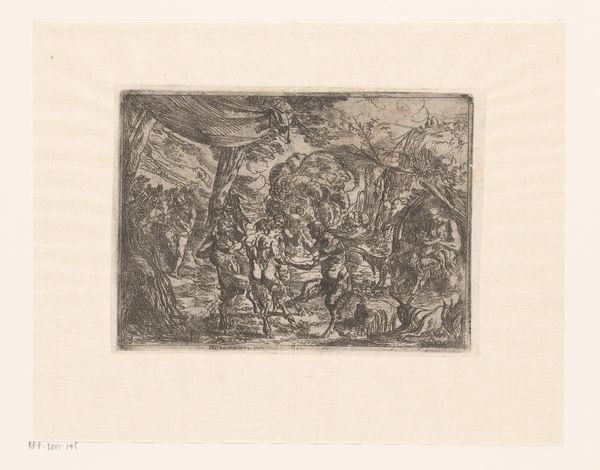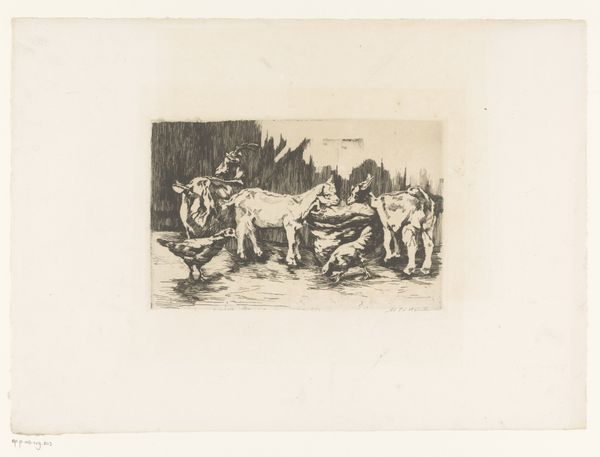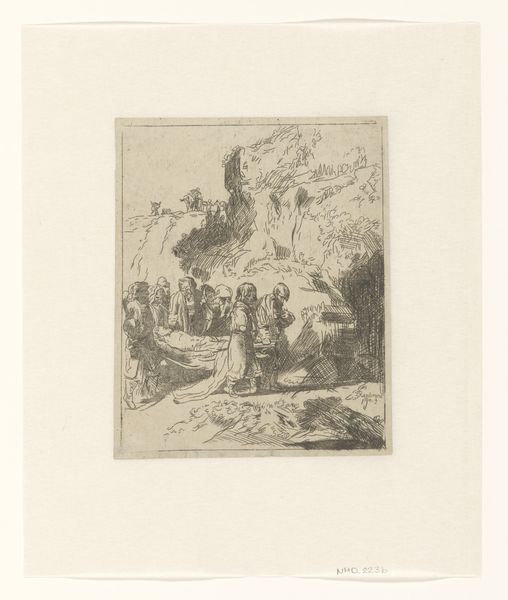
drawing, pencil
#
drawing
#
etching
#
figuration
#
pencil
#
symbolism
Dimensions: height 365 mm, width 542 mm
Copyright: Rijks Museum: Open Domain
Curator: Immediately, the balance and ethereal qualities create an otherworldly, meditative mood. What a fascinating contrast between the solidity of the figures and the implied ephemerality. Editor: I’d like to introduce to our listeners a work by Wilhelmus Petrus van Geldorp, an undated pencil drawing and etching, produced sometime between 1842 and 1900, titled "Hel en Hemel". It seems to explore themes of heaven and hell. The paper, given its age, hints at a specific industrial production period, probably influenced by growing availability of wood pulp. Curator: The way the artist segments the figures, light from left to right, strikes me. The material choices, the gradations of shade achieved with pencil and etching... they point to van Geldorp’s strong awareness of pictorial traditions. Editor: I wonder what the social background of van Geldorp might be? Was this work commissioned? Did its symbolism tap into pre-existing religious sentiments, or try to steer them in new directions? The etching technique itself would require specialised workshop skills, embedding the creation of the work within a certain social and economic milieu. Curator: Look at how the lines work in creating a symbolic opposition between two sides of this heaven/hell space, right? It emphasizes a clear division of the pictorial plane, that reflects an overall concept through very basic means. Editor: True, but I keep coming back to the materials themselves. Pencil allows a certain kind of accessible mark-making – widespread literacy and artistic amateurism impacted artistic circles as such. And juxtaposing this with specialized, and often male-dominated craft etching gives this piece multiple layers regarding means of artistic production. Curator: Absolutely, but consider the composition. Each figure possesses an outlined and well-executed distinct characterization. Even those slightly washed figures. Every placement makes deliberate statements regarding content. The symbols do speak for themselves, with no material context necessary! Editor: Yet even this composition relied on networks of suppliers who processed raw materials into canvases, inks, pencils, or the labour for distributing artworks into private and public collections. Without means of artistic creation and the system in place for this, that symbolic layout and balance that fascinates you would be nothing. Curator: Yes, of course. In examining the materials, one cannot deny its impact. It simply offers a whole extra perspective, that changes depending on where and how you position yourself in respect to art. Editor: Agreed! There's certainly more to discover about this work, especially understanding its socio-economic circumstances and artistic background.
Comments
No comments
Be the first to comment and join the conversation on the ultimate creative platform.
